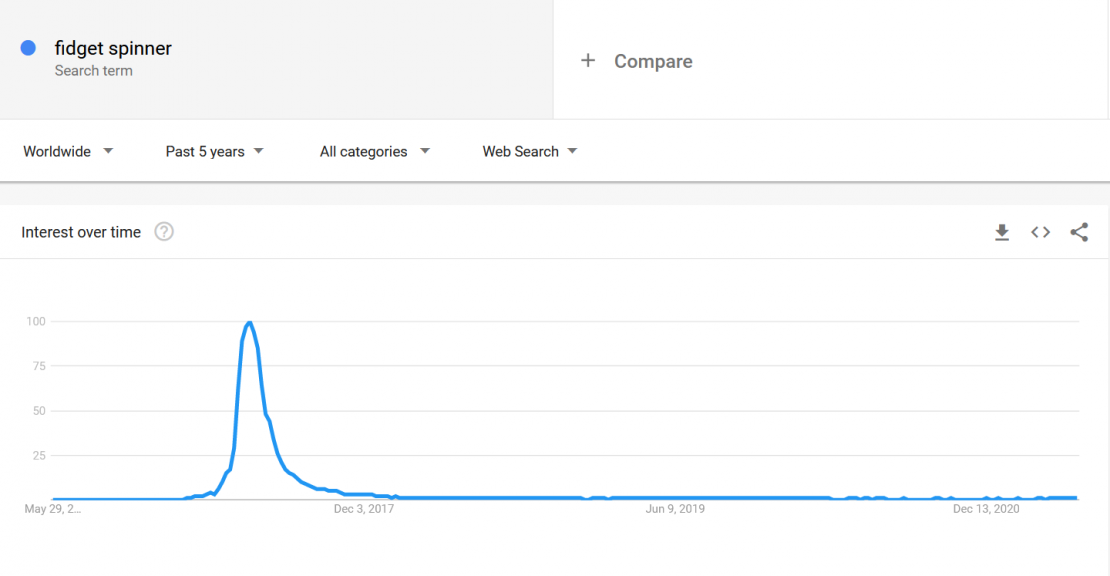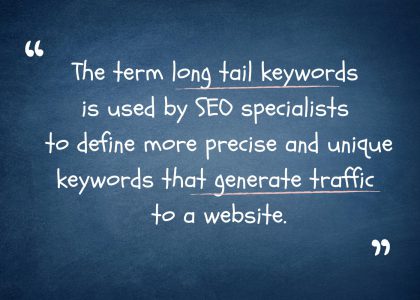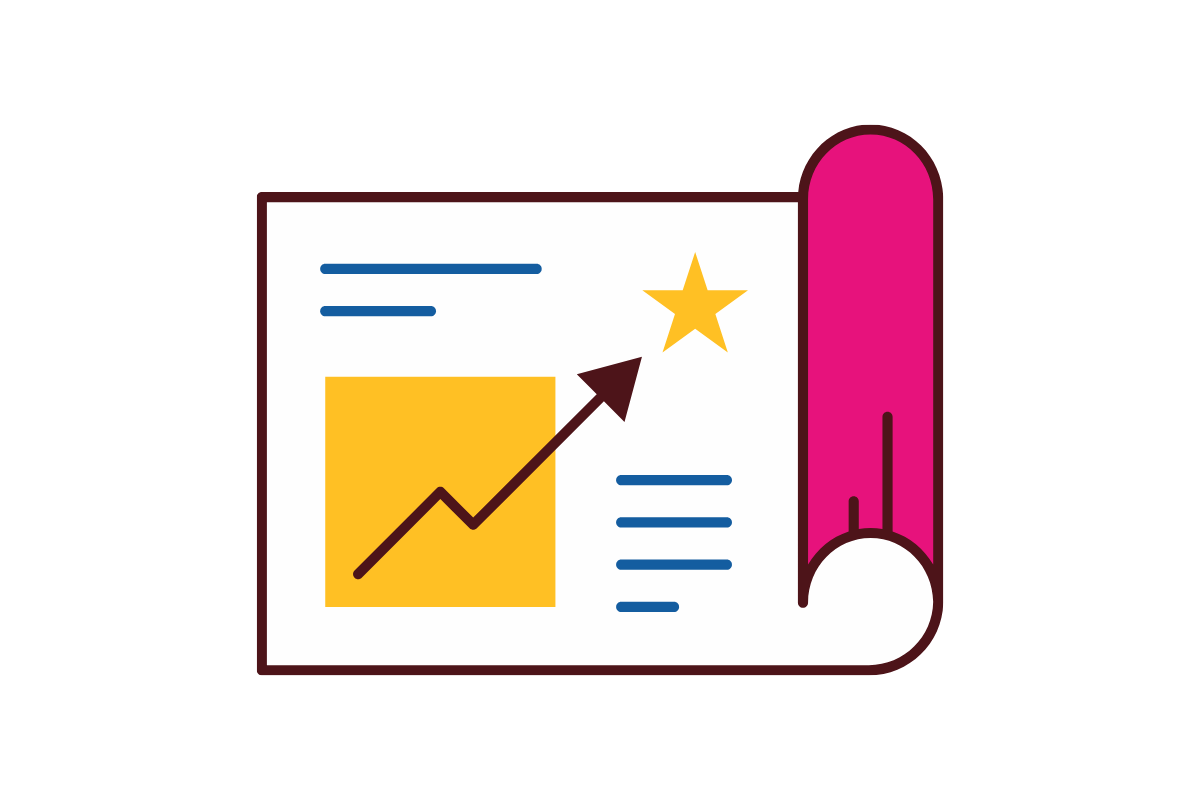Keyword Analysis
| By Barbara Oleszek | 0 Comments

Table of contents
Czytasz teraz:
Keyword Analysis
Close
Setting up your online business is relatively simple: create a fan page on social media, a listing on Google Maps, set up a website, and your online business is ready to go! Or is it? Reaching customers, making an appealing offer, and getting them to stay on the website requires more work. Marketing and keyword and intent analysis will be of great use here.
Keywords – A Starting Point for Visibility
Websites appear in the search engine thanks to keywords. Well-chosen phrases are the foundation on which other elements of our website are based – titles, descriptions, headings, and broadly understood content.
A keyword is a term that describes the article content in the best way or appears in it most frequently. In academic practice, keywords are identified in a given text after it has been written. In internet marketing, however, it’s the opposite – a keyword is defined first, and a text is written later. Where does this difference come from?
Search engines, including the most popular one – Google, are based on keywords. Keywords are phrases that users enter into a search engine, which provides a list of website addresses related to the given phrases. Their order is not accidental: along with the development and growing popularity of Google, the complexity of the algorithm for sorting data collected in the index also grows. The goal is to provide the most accurate results and answer the user’s questions as accurately as possible.
(You will find the rest of the article below the form)
Contact us and get a free quote
We will analyze your business and prepare an individual price offer for the optimal marketing mix for you. Completely free.
Verseo spółka z ograniczoną odpowiedzialnością with its registered office in Poznań, at the following address ul. Węglowa 1/3, 62-122 Poznań is an administrator of your personal data.
About Verseo
Company’s office is located in Poznań. Company is entered into the register of entrepreneurs, kept by the District Court of Poznań – Nowe Miasto i Wilda in Poznań, 8th Commercial Division of the National Court Division under number 0000596164, NIP (Tax Identification Number): 7773257986. You can contact us by writing a letter on the address indicated above or e-mail:[email protected]
You have right to:
- access to your personal data,
- correct your personal data,
- demand to remove your personal data,
- restrain to process your personal data,
- object of process your personal data,
- transfer your personal data,
- withdraw consent.
If you think we process your personal data not in accordance with the law, you have right to object to supervisory authority – President of Personal Data Protection Office.
We process your personal data to:
- handle your question, based on art. 6 ust. 1 lit. 6 of General Data Protection Regulation
- promote our goods and services including ourselves in connection with your consent, based on art. 6 ust. 1 lit. a of General Data Protection Regulation
- protect or claim in connection with our reasonable interest, based on art. 6 ust. 1 lit. f General Data Protection Regulation
You share your personal data freely. Please remember that without sharing your personal data you will not be able to send us a message, and we will not be able to answer you.
We can share your personal data with trusted recipient:
- providers of tools made for: website analytics, marketing automation,
- hosting operators.
We will process your personal data by the time:
- which is necessary to achieve a specific purpose for which they were collected and after this term by the time which is necessary to protect or possible claim,
- of withdraw your permission .
We don’t process personal data in a way, which would involve making only automated decisions about you. More information about processing of personal data you can find in our privacy policy.
Detailed Keyword Analysis
Modern marketing requires not only considerable knowledge, but also finesse and intuition, which come with practice – like Cicero said: “Usus magister est optimus”. Nonetheless, a good theoretical background is invaluable.
The general division of keywords we most frequently use in the context of positioning focuses on the length of phrases:
- short-tail – phrases that consist of one or two words. They are frequently searched, but – due to their general nature – they may not lead to an increase in website traffic or a purchase, e.g. “boxing gloves”,
- long-tail – phrases that consist of more keywords. The number of searches concerning these terms is lower, but due to their higher specificity, the chance of users going to the page and making a conversion is actually higher than in the case of more general phrases, e.g. “boxing gloves 10 oz everlast powerlock2”. You can read more about long-tail keywords in a detailed article on our blog.
In some studies, mid-tail keywords are also distinguished, but this term isn’t very popular. It’s characterized by a lower degree of detail than long-tail phrases – e.g. “boxing gloves everlast”. They’re more frequently searched than long-tail phrases, and the competition here is higher.
Keyword analysis will allow you to distinguish phrases from both (in fact, all three) groups. When looking for keywords for positioning, you shouldn’t focus on just one of those groups – diversification is crucial here. Targeting your activities on short-tail phrases requires more financial resources to beat large competitors (most often: big players operating in the market for years) and a more advanced strategy. Achieving success also takes more time here. Expanding your selected phrases with those from the long tail and including them in the strategy generally allows you to achieve satisfactory results faster and with less time and money. Long-tail phrases are an excellent basis for building a content strategy.
Brand keywords are phrases that contain the name of a brand or a company; they can also be a surname or an artistic nickname. In the case of an original company name, such phrases naturally appear at the beginning of search results. In some industries, however, it can be more complicated – e.g. due to a common name element or a keyword such as “windows”.
Making your brand name visible is crucial for two reasons:
- Some customers look for services by typing the name of a brand that they have used before or the logo of which they have seen in an ad. It’s not difficult to place our brand name on the homepage of the website. It can bring you benefits in the form of the first place on the SERP.
In many cases, the brand name is the same as the website URL, which additionally facilitates orientation for web crawlers and potential customers looking for our services.
- The competition never sleeps. Ranking for the name of the competition isn’t a popular procedure (it requires placing the name of the competing company on your website, which may result in legal problems). A similar principle also works in Google Ads – it’s advisable to advertise using our brand name and not risk that our place is taken over by competing companies.
Industry keywords are similar to the brand keywords. They include phrases specific to a given industry – which are typically found in more extensive content, e.g. on a business blog or in a detailed offer description. Such phrases will help build the expert position – they will match people looking for industry information with our brand. This strategy may pay off in the long run.
Keywords Over Time
In-depth keyword analysis should take into account the keywords’ place in the timeline. By considering the calendar and constantly changing trends, we can distinguish keyword types that will be valid for a longer time, and those whose lifespan is much shorter.
Short-term keywords are phrases that lose their impact over time. They tend to be immensely popular when they appear, e.g. as a result of the growing popularity of a viral or political events. This category also includes phrases related to the promotion of films, books, fashion collections, etc. To use them effectively, we need to have knowledge of the current (and future!) trends. The most popular tool for tracking them is Google Trends. It allows you to observe trends and the level of interest in given issues. For example, the phrase “The Force Awakens” (the title of the VII episode of Star Wars) reached one peak over the last few years – related directly to the premiere – then its popularity has drastically decreased.

A short-term attractiveness of a phrase can be seen in the example of the gadget/toy called fidget spinner. The phrase had a rapid increase in popularity – followed by a sharp decline. Taking advantage of such a phrase isn’t so difficult: especially if we focus on it in our articles and present it in an attractive form. Blogs with film reviews benefit from such phrases (especially if the authors have access to pre-premiere screenings). Gaining a high ranking position in search results will allow you to increase traffic on your subpage, but it will lose its value over time.

Long-term keywords are very steady phrases – their searchability is unlikely to undergo sudden fluctuations. They are also referred to as “evergreen”. This category includes phrases related to e.g. historical facts (especially those discussed in schools) or, for example, phrases related to cooking.
The search term of “boiled egg” had one spike last year – during Easter.

Analyzing keywords from long-term categories allows you to find phrases bringing constant traffic. Such words can be distinguished in any industry. Finding terms and creating the right content leading to high search-engine positions guarantees the inflow of new visitors to the website. This, in turn – with a properly designed site – will allow you to increase traffic to the site and possibly gain new audiences for longer. Such phrases work well in long blog entries.
When analyzing keywords, we can also observe that phrases are seasonal. This term is used to define phrases that are closely related to the calendar, e.g. all kinds of holidays, communions, and weddings as well as seasons of the year. The seasonality of key phrases is important when determining the budget of a Google Ads campaign. In SEO, it’s less important: you should work all the time for a high website ranking position. To take advantage of seasonality, it’s necessary to prepare a dedicated subpage in advance and fill it with content. It’s also a good idea to consider internal and external linking. For this purpose, you can use, for example, tags in online stores. A page with the tag of “gifts for Women’s Day” should have a dedicated URL and contain text and a product list. Placing a tag with a term and a link on the products will strengthen internal linking. During the proper season, the page can be additionally promoted using Google Ads and on the homepage.
Keywords On Location
The Internet helps promote local businesses. A good selection of keywords and their placement in a specific location will allow us to reach recipients near our services and products.
Geo Targeting Keywords are phrases that contain the name of a location, town, or a district. Such phrases help reach users located in our area and avoid phone calls with inquiries from the other end of the country. When including such terms in your strategy, you should leave out the names of places where you don’t have a branch – local positioning is much more effective when we put the office address on the contact page. Google My Business listing supports these activities – allowing us to reach an even wider group of recipients.
How Do the Users Express Their Intentions?
When discussing keywords, remember about the users. The analysis of their intentions and the keywords they use allows you to determine what content will satisfy their needs and lead to a conversion.
Intent targeting keywords are phrases that will exactly match the users’ intentions. Matching the content to the search phrases used when making purchasing decisions will make it easier to reach the less determined customers and those who are ready to spend money.
- informational – keywords aimed at finding information and expanding knowledge as well as comparing products. Phrases can take the form of queries, such as “how to make a chicken soup?”, “how to choose tires?” or “why use mouthwash?”. By adding these queries to your strategy, we can satisfy the user’s knowledge and arouse the need to purchase. For this purpose, it’s a good idea to expand your blog or the advice section on the website.
- navigational – queries aimed at finding a specific page or company. The phrases contain the names of specific brands or a fragment of the domain.
- transactional – also known as commercial, implying a desire to make a transaction. These types of phrases include, among others, terms related to the pace of the transaction (with an emphasis on “fast” and “on the spot”), as well as the location and cost of delivery.
The combination of the users’ intentions with the selected content will allow you to keep them on your website for longer. Well-chosen content that meets the internet users’ intentions will encourage them to make a decision. Subtly suggesting products (e.g. through a carousel at the end of a blog entry or simply through links placed in the content) will make it easier for users to move to the next level of the shopping path and finally – to make a transaction.
Is a Given Phrase Competitive?
When analyzing keywords, it’s also necessary to determine their competitiveness. Each phrase has its specificity which consists of the number of search results, the average number of queries, and the type of Google results. The level of competitiveness also depends on the industry and competitors – including the elements on their websites and the link profile.
The number of results, the average number of queries, and the type of results are directly related to the Google search engine. The number of results can be found directly in the search engine – under the query.

The information on the average number of searches can be obtained in one of the tools – e.g. Google Keyword Planner. As for result types, we need to pay attention to how Google tends to present information.
The variances of SERP appearance include culinary recipes or snippets.


Another issue is the number of ads that make phrases longer – as well as search results concerning hotels.

Optimizing for certain words may not be profitable due to the result types – the user will get the information immediately from Google and won’t decide to go to another site. In this case, the funds that we’d spend on promoting this phrase should be shifted to a long-tail keyword – which will convert better.
When analyzing keywords and assessing their competitiveness, you should also consider the industry characteristics and our direct competition. Industries that invest in marketing will also be strongly valued online. The biggest threat here are brands that have been operating on the market for years, have a strong link base, and a good history of the site. Very competitive industries, e.g. fashion, will require an appropriate selection of keywords (niche terms) and a large financial base – especially if we compete with the biggest players on the market. When targeting short-tail keywords, you need to be patient – high ranking positions are the result of many months of hard work.
When checking competitiveness, you should also take content of pages appearing in the search results into account – structure, technologies used and the amount of content. In many cases, Google selects websites with similar content – for example, with a similar amount of content, headers, or graphics. Depending on the research results, when evaluating a given term, you should consider the cost of a potential website rebuild and the cost of filling such a website with content. In addition, you need to remember about the price of links and the time spent on building them.
Keyword Analysis – Effects
Collecting data as well as tracing information using tools and organic results will allow you to establish a word database constituting your basis for optimization activities. Then, it will be possible to build a strategy for positioning activities, e.g. to determine the number of texts or plan changes in the website code.
Keyphrase analysis should be carried out regardless of the current phase of the positioning process – the internet is subject to rapid changes and keeping up with them allows the websites to stay on top positions. It’s also a good idea to take a critical look at the list of phrases and observe how users search for information on our website. Their suggestions – expressed through specific activities, e.g. going to the next subpage or using the search engine, can improve the operation of our website, which will become more pleasant for the user and web crawlers.



















Recent Comments